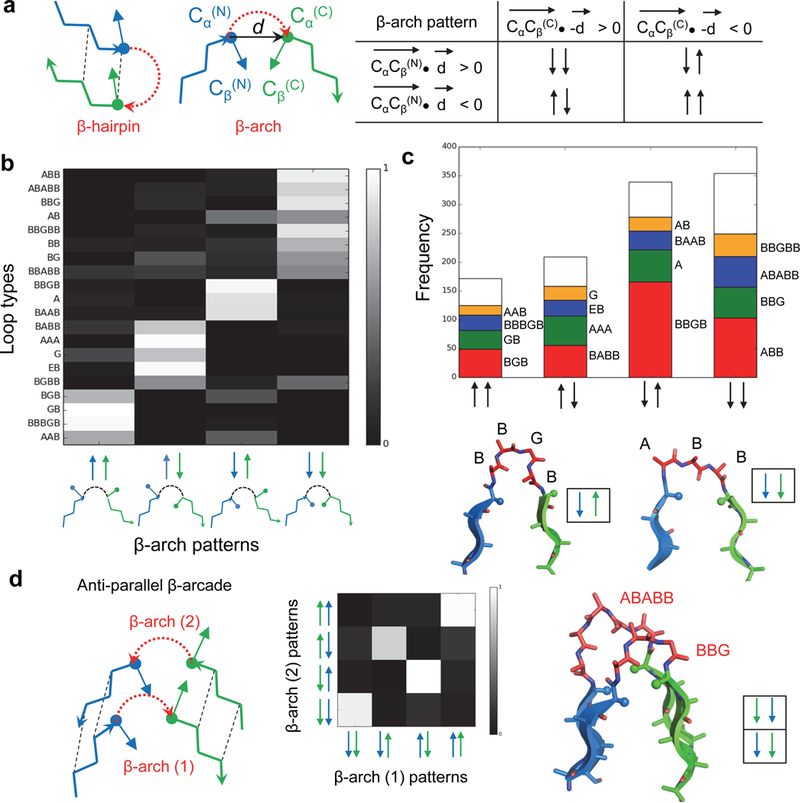Fig. 1. Constraints on β-arch geometry.

a, Sidechain directionality in the β-arch. Left, comparison between β-hairpin and β-arch; the CαCβ and d vectors used to define the orientation of the two adjacent sidechains are indicated. The four possible sidechain directionality patterns are on the right. b, Turn type dependence of β-arch sidechain patterns. Loops on the y-axis are described by their ABEGO torsion bins (Supplementary Fig. 1). Most of the loops adopt only one of the four possible sidechain patterns. c, Frequency of the most common loops for each of the four β-arch sidechain patterns. There are strong preferences, for example BBGB is strongly associated with the “↓↑” pattern, whereas ABB is strongly associated with the “↓↓” pattern (shown in bottom). Only loops with bending < 120 degrees (Methods) and containing between 1 and 5 amino acids were considered in this analysis. d, Left, two stacked β-arches having in-register strand pairing form β-arcades. Middle, since strand pairs of the β-arcade are in-register, the sidechains adjacent to one β-arch loop must have the same orientation as the paired sidechains that are adjacent to the second β-arch loop, and therefore not all loop pairs are allowed. Right, example of a β-arcade formed by two common β-arches with compatible sidechain patterns.
